Although known almost exclusively as the birthplace of the tango, Argentina is home to a diverse array of music and dance styles from its various geographic regions. Largely a mixture of European and indigenous influences (referred to as mestizo), many of Argentina’s musical genres can be divided into two primary categories: folklore and popular music. In addition, the European influences are not limited to Spanish origin, as Argentina became a melting pot of numerous European migrants, including settlers from Poland, Austria and Germany. While African influences are not as extensive in this part of South America, Argentina’s borders with Uruguay and Brazil are notably rich in Creole traditions where African-derived drumming and dance forms abound.
Folklore Music
Among Argentina’s most popular forms of folklore are the zamba, http://www.youtube.com/watch?v=V3eTlhwA0Yw. Another style called the chacarera is a widely popular form dating back to the 19th century, emerging in the north western region of Argentina. http://www.youtube.com/watch?v=dh38UY5zW04 Another notable genre is the chamamé, originating in the north eastern region of Corrientes around the late 19th century. With a myriad of European influences, its multiple styles include the polca (polka) and the vals (waltz), and are played mainly on guitar and the accordion-derived bandoneón. ww.youtube.com/watch?v=a9DtH9zjMx4
Perhaps the most complex and fascinating musical and dance tradition to emerge in Argentina, specifically in Buenos Aires, is the tango. http://www.youtube.com/watch?v=4ScnDUvj1Lw. Its origins date back to the late 1700′s with ancestors including the Afro-Argentine milonga, the Uruguayan candombe and the Cuban habanera. It evolved as a male slave dance performed in the brothels when it formally emerged around 1877. At first ridiculed or parodied, it made its way up the social ladder, finally receiving acceptance not in Argentina but in Paris in the 1920s. As the dance genre began to gain recognition in Buenos Aires, a song form also developed paving the way for the tango song, which saw its golden age through interpreters such as Carlos Gardel.
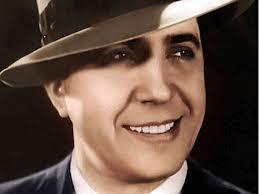
Gardel
Recently, contemporary groups have begun mixing the tango with drums, from Uruguayan candombe drums to the Peruvian cajón and even synthesized and sampled drum beats. Several musicians have explored the renewed potential of the tango in the newest craze: tango nuevo. http://www.youtube.com/watch?v=GBXckflFSDs
Another significant musical tradition in Argentina is that of nueva canción, http://www.youtube.com/watch?v=79OggOHTpZw a genre attributed to several countries in Latin America, and inspired by Cuba’s nueva trova movement.
Cumbia is an important part of contemporary Argentine music, originally derived from the Colombian cumbia, adopted by the lower classes in the bailantas, widespread in the 1990s, and then turning more aggressive and explicit in the 2000s with “shanty town cumbia” (cumbia villera). http://www.youtube.com/watch?v=3MZnfxeoxrk
Here is a list of the different types of Argentine influenced folklore music; Baguala, Bailecito, Kaluyo, Candombé, Carnavalito, Chacarera, Chamarrita, Chamamé, Chaya, Cifra, Cielito, Cogollo o Cogoyo, La Condición, Copla (music), El Cuando, Cumbia villera, Décima, Escondido, La Firmeza, Gato, Guaracha santiagueña, Huella, Malambo, Media caña, Milonga, Murga, Pala-Pala, El Palito, Payada, Pericón, Polka, Rasguido doble, Refalosa, El Sombrerito, Tango, Nuevo tango, Tonada, Tristecito, Triunfo, Valsecito criollo, Vidala, Vidalita, Yaraví, Zamba
Popular Music
Argentine rock, or Rock Nacional, is a distinctive form of Argentine rock and roll and the most listened to and respected of all popular music in Argentina. At the time (late 60s), popular music was a style called ritmo latino, a mainstream pop genre.
Bohemian hangouts in Buenos Aires and Rosario were the cradles of the genre, relying heavily on British rock influences, but in the mid-1960s musicians began exploring local musical roots, creating a local sound.
Musicians like Litto Nebbia of Los Gatos began recording their own kind of rock. Los Gatos’ La Balsa, released early in their year, established the distinctive sound of Argentine rock. http://www.youtube.com/watch?v=Yv9PnHsEGas By 1970 Argentine rock had become established among middle class youth. In the 80s, Argentine rock bands became popular across Latin America and elsewhere (Serú Girán http://www.youtube.com/watch?v=HgFvXlndcy0 , Soda Stereo http://www.youtube.com/watch?v=BjDwamALCDw , Enanitos Verdes http://www.youtube.com/watch?v=lX-0ayieRvQ , Sumo http://www.youtube.com/watch?v=kWcL5iR0Yzg , Fabulosos Cadillacs http://www.youtube.com/watch?v=M3mE7yhPvU0 , Virus, Andres Calamaro ).
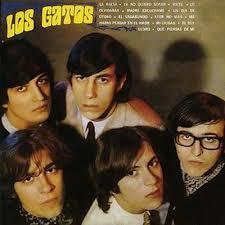
Los Gatos
Today it is a staple of popular culture with many sub-genres: underground, pop oriented, and some associated with the working class (La Renga, Divididos, Los Redonditos). Current popular bands include: Los Piojos, Babasónicos http://www.youtube.com/watch?v=D-wHCm2itIk , La Renga, Las Pelotas, Divididos, Attaque 77, Intoxicados, De Bueyes and Bersuit http://www.youtube.com/watch?v=h73Qh54l1h8 . Argentine rock is the most listened-to music among youth; its influence and success has expanded internationally owing to a rich and uninterrupted evolution.Some of the most popular Argentine rock musicians are Charly García http://www.youtube.com/watch?v=P-x184UJGBM, Gustavo Cerati http://www.youtube.com/watch?v=oHGnxHfQ4IM , Luis Alberto Spinettahttp://www.youtube.com/watch?v=Ad0htcl7-e8 , Fito Páez http://www.youtube.com/watch?v=9K0N6Vq5tU4, and Pappo.
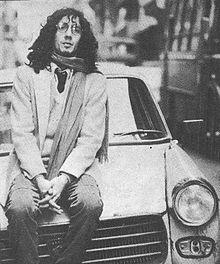
Fito Paez
Argentine electronic music experienced a surge of popularity in the 1990s. Rocker Gustavo Cerati switched to electronica in 1999. Electronic dance parties and shows like Creamfields BA are favorites among thousands. Prominent electronica DJs include veteran Diego Ro-K, Hernán Cattáneo who has played Burning Man, and drum and bass star Bad Boy Orange. Indietronica bands like Entre Ríos http://www.youtube.com/watch?v=SUNChFHv_Vo have also become popular. Bajofondo Tango Club and the Gotan Project have fused tango with electronica.[8] From the Zizek Club in Buenos Aires, ZZK Records began in 2007 to create a fusion of electronica and cumbia.
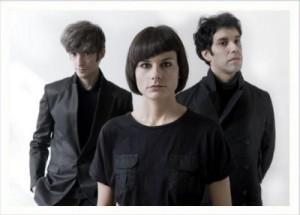
Entre Rios
Pop bands have seen great popularity, topped by Bandana, the most popular. Other artists in this genre include Miranda! with a touch of “electro” sound, and Babasónicos, of lasting popularity. Artists combining experimentation with glam include Airbag and Juana la Loca, in addition to Arbol, an artist combining hardcore with pop and violin.
Reggaeton is increasingly popular in Argentina and can be described as Latin hip hop. Here’s a link to help you acquire the sounds. http://www.youtube.com/watch?v=9HeCbyjg3sE
Jazz
The best-known Argentine jazz musician internationally is probably Leandro Gato Barbieri. The tenor saxophonist worked with renowned big band orchestra conductor Lalo Schifrin in the early 1960s, shortly before Schifrin became internationally known for his composition of the theme to Mission: Impossible.
Growing from the Jazzología series begun by local jazz enthusiast Carlos Inzillo in 1984, the Buenos Aires Jazz Festival has, since 2002, attracted legends and newcomers from all major jazz genres, as well as avant-garde sounds.
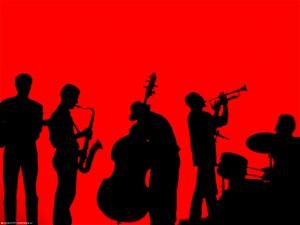
All that Jazz..
Opera
The Buenos Aires Philharmonic has its home in the renowned Colón Opera House. Founded in 1946, it is considered one of the more prestigious orchestras in its nation and Latin America, and has received several honors in 60 years of history. Another well established orchestra is the Argentine National Symphony Orchestra.
Prominent Argentine composers in the genre include symphonic composer Juan José Castro, Alberto Williams, who was known for his early fusion of nativist and classical genres, Carlos Guastavino, known for his romanticist works, and Alberto Ginastera, a composer considered one of the most important Latin American contributors to classical music. Internationally known performers include pianist Martha Argerich, violinist Alberto Lysy, guitarist María Isabel Siewers, tenor José Cura, mezzo-soprano Margherita Zimmermann, and pianist and conductor Daniel Barenboim, who has directed the Orchestre de Paris, the Chicago Symphony Orchestra and the
